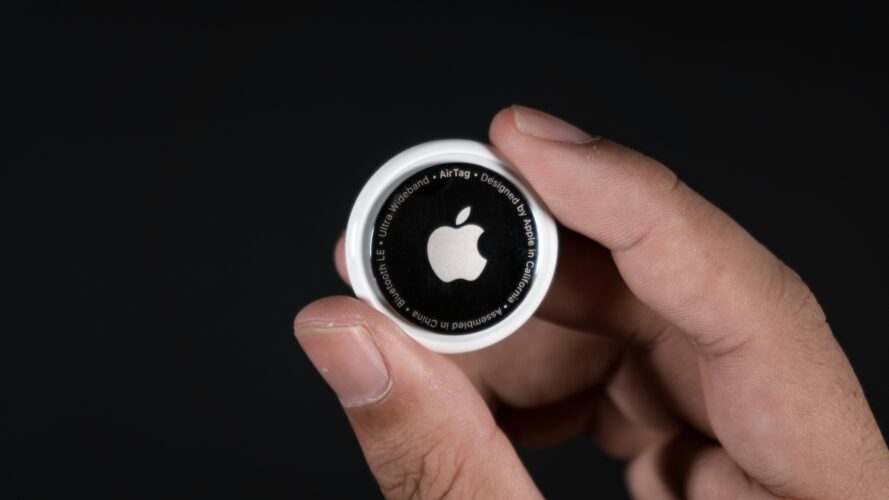How to Protect Your Luggage With Apple AirTags
There’s nothing like lost luggage to throw a wrench in your travel plans. Whether you’re heading out on vacation or flying for work, knowing your bags made it to the same destination as you is a major relief. Thankfully, Apple AirTags offer a smart, simple way to help keep tabs on your stuff. And now, there are even more reasons to add one to your luggage!
Here’s how you can use Apple AirTags to protect your luggage.
What Is an AirTag and How Does It Work?
Apple AirTags are small, coin-sized Bluetooth trackers designed to help you locate your belongings through Apple’s Find My network. You just pop one into your suitcase, and if it ever goes missing, you can use your iPhone to see its last known location within a few meters.
The AirTag doesn’t use GPS. Instead, it sends out a Bluetooth signal that’s picked up by other nearby Apple devices. Those devices then anonymously relay the AirTag’s location back to your Find My app. That means you can still track your bag even when you’re nowhere near it as long as someone with an iPhone, iPad, or Mac is.
It’s incredibly easy to set up, too. Just bring the AirTag near your iPhone, and it will automatically pair. From there, you can give it a name (like “Checked Bag” or “Backpack”) and it’ll show up in your Find My app.
What’s New: AirTags + Airline Tracking
Here’s where things get even cooler.
Apple recently started rolling out a new feature that allows travelers to share their AirTag’s location directly with airlines. It’s called Share Item Location, and it works with a growing list of carriers including American, United, Delta, British Airways, and more.
This means that when your bag goes missing, you’ll be able to generate a secure tracking link from the Find My app and send it to the airline. They can then see the same AirTag location you do and (hopefully) recover your bag faster. It’s a big step forward from the days when airlines would shrug off the location data you offered from your own phone.
You’ll find this feature in iOS 18.2 and later. Just tap your AirTag in the Find My app, select “Share This Item,” and you can send the link via text or email.
The Benefits of Using an AirTag for Travel
So, why bother?
Here’s what AirTags bring to the table when you’re flying:
- Peace of mind – Even if your bag doesn’t show up on the carousel, you’ll know exactly where it was last seen.
- Faster recovery – You can tell the airline, “My bag is still at the departure airport,” and back it up with actual tracking data.
- Precision Finding – If your bag is nearby (like in a hotel room, overhead bin, or storage area), newer iPhones can guide you to it within a few feet.
- Easy to set up and use – You don’t need a subscription, extra apps, or a complicated pairing process.
What AirTags Can’t Do (And How to Work Around It)
AirTags are great, but they aren’t magic. Here are a few things to keep in mind:
- They’re not GPS devices. Updates depend on nearby Apple devices. In low-traffic areas (like small airports or cargo zones), tracking might go dark until someone passes by.
- They don’t update in real time. AirTags often go quiet while your bag is moving (like on a conveyor belt or in the plane’s cargo hold). You’ll usually see an updated location once it stops moving.
- Some airlines still won’t act on the info. Even with better tools, not all airline staff are trained to use the tracking link, or may still prefer their internal systems.
- Signal interference is real. If your bag is packed tight with metal objects or sealed in a metal container, it could block the signal entirely.
- Battery life matters. AirTags last about a year on a coin battery, so check it before your trip.
Bottom line: an AirTag is a great layer of insurance, but it doesn’t replace traditional tracking or good old-fashioned preparation.
Tips to Make AirTags Work Even Better for You
To get the most out of your AirTag when traveling, try these simple tips:
- Place it wisely. Stick the AirTag inside an inner pocket or tucked-away compartment. Avoid clipping it outside where it could fall off or be noticed.
- Label your bag anyway. A visible luggage tag with your name and phone number still matters.
- Document your setup. Take a photo of your packed bag with the AirTag inside. It helps with lost luggage claims and may speed up recovery.
- Use the Share Location feature. If your bag is delayed, don’t wait — share the tracking link with the airline as soon as you file a claim.
- Track multiple bags. If you’re checking more than one bag, use an AirTag in each.
- Check your battery. In the Find My app, you can see when the AirTag battery is running low. Replace it before you travel.
Should You Use an AirTag for Luggage?
Absolutely! Especially if you are checking luggage containing valuables. But only as long as you understand its strengths and limitations.
AirTags have already helped thousands of travelers locate lost or delayed luggage, and with Apple now partnering with airlines to streamline the process, their usefulness keeps growing. They won’t prevent your bag from being misplaced, but they do give you more visibility and control and that can make all the difference in a stressful situation.
Whether you’re a frequent flyer or just heading out for a vacation, dropping an AirTag in your suitcase is one of the easiest ways to travel a little smarter.













